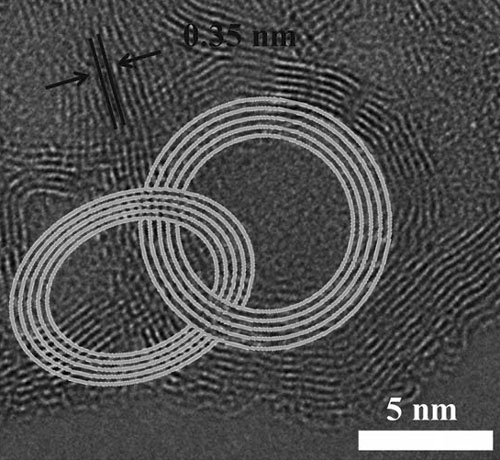| Posted: Nov 25, 2014 | |
Surface state engineering to achieve white LEDs with carbon nanomaterials |
|
| (Nanowerk Spotlight) White-light-emitting diodes (W-LEDs) have many advantages over forms of lighting – incandescent, fluorescent and halogen – and this solid-state lighting technique is bound to make major inroads into the commercial and household markets. | |
| Conventional W-LED fabrication uses phosphors, which depend on scarce and expensive rare earths, or in a more recently developed technique, on quantum dots (read more: "Fully 3D-printed quantum dot LEDs"). Unfortunately, the toxicity of the elements used for efficient quantum dot based LEDs – CdS, CdSe, and their Pb containing counterparts – is a severe drawback for many applications. | |
| "Fortunately, carbon, as one of the most abundant materials in our earth, was found to emit visible light when it was tailored into nanoscale materials, such as carbon nanodots," Professor Haibo Zeng, Director of the Institute of Optoelectronics & Nanomaterials at Nanjing University of Science and Technology, tells Nanowerk. "Significantly, its quantum yield was reported to be as high as 80%, which is even comparable with the best inorganic semiconductor quantum dots. So, luminescent nanoscale carbon materials exhibit an outstanding potential for W-LEDs because of their low-cost and environment-friendly advantages." | |
| One major obstacle to using carbon nanomaterials is the occurrence of aggregation-induced quenching (AIQ) effects, a process where neighboring molecules dissipate some of the captured luminescence before it can be used. That means most observed luminescence in solution of nano-carbon will vanish during the drying process. | |
| "Considering the AIQ effect of surface states on the luminescence, we hypothesized that if we can design and achieve a relatively pure surface, the donor-acceptor attraction among adjacent luminescent carbon nanodots would be greatly depressed, and hence luminescence in the solid state could be well persisted," says Dr. Jizhong Song, first author of a paper that has been published in Angewandte Chemie International Edition ("Intercrossed Carbon Nanorings with Pure Surface States as Low-Cost and Environment-Friendly Phosphors for White-Light-Emitting Diodes"). | |
| In new work by Zeng and his team, they elaborately designed precursors and processes to achieve the fabrication of intercrossed carbon nanorings (IC-CNRs) with very pure hydroxyl surface states for the first time, which enabled them to overcome AIQ effect, and to emit yellow-orange luminescence in both colloidal and solid states. | |
 |
|
| HRTEM image of nanorings, exhibiting 0.35 nm lattice spacing in well accordance with graphite. (Image: Reprinted with permission by Wiley-VCH Verlag) | |
| As the researchers point out, this work advances the field of fluorescent nano-carbons in two aspects. Firstly, the fabricated pure surface and inter-crossed structure greatly depresses the AIQ effect and results in strong and lasting luminescence of this nano-carbon material. | |
| Secondly, as a direct benefit of such scarce solid luminescence from nano-carbon, the researchers demonstrate W-LEDs through combining the nano-carbon material with a GaN-based LED chip. | |
| Considering the usage of rare earth and toxic elements in conventional phosphors, such fluorescent nano-carbon is environment-friendly substitute to be used in white LEDs. | |
| This work has been based on previously published results ("Engineering surface states of carbon dots to achieve controllable luminescence for solid-luminescent composites and sensitive Be2+ detection"), where the team found that the coexistence of different surface states could be the reason of fluorescence quenching. | |
| This research could open the door for white LEDs with carbon nanomaterials as phosphors. Zeng cautions, though, that there are several challenges to overcome, such as the stability of nanocarbon and its luminescence under UV or blue light irradiation from chips. | |
 By
Michael
Berger
– Michael is author of three books by the Royal Society of Chemistry:
Nano-Society: Pushing the Boundaries of Technology,
Nanotechnology: The Future is Tiny, and
Nanoengineering: The Skills and Tools Making Technology Invisible
Copyright ©
Nanowerk LLC
By
Michael
Berger
– Michael is author of three books by the Royal Society of Chemistry:
Nano-Society: Pushing the Boundaries of Technology,
Nanotechnology: The Future is Tiny, and
Nanoengineering: The Skills and Tools Making Technology Invisible
Copyright ©
Nanowerk LLC
|
|
|
Become a Spotlight guest author! Join our large and growing group of guest contributors. Have you just published a scientific paper or have other exciting developments to share with the nanotechnology community? Here is how to publish on nanowerk.com. |
|
